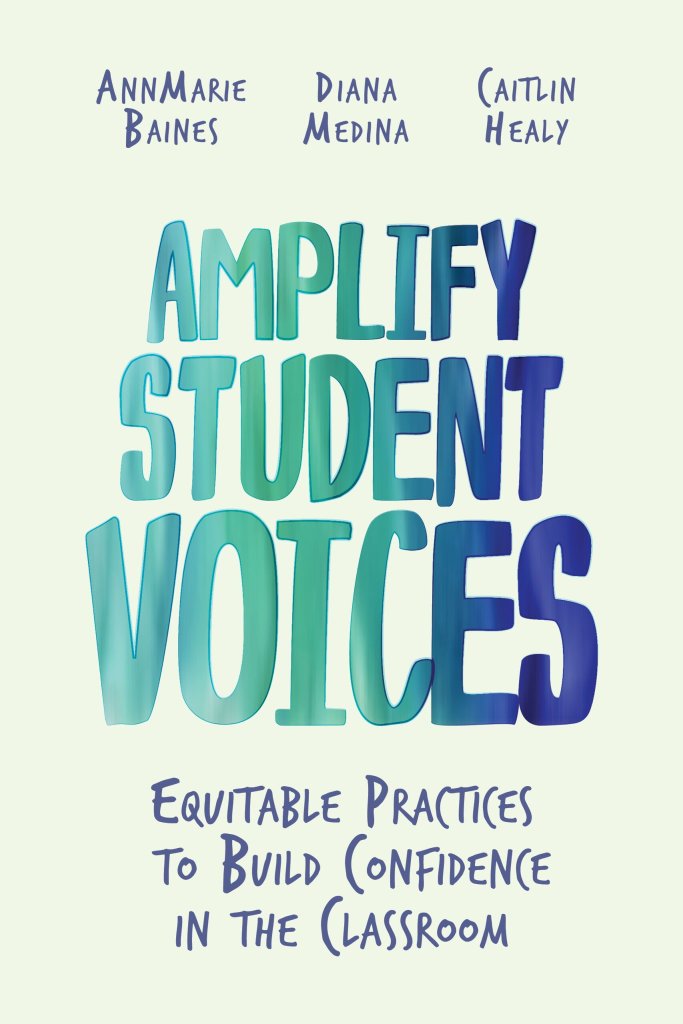Using Debate as an Educational Tool
Classroom debates are closely connected to communication standards in all grades, and the predictable structure helps students express themselves.
Your content has been saved!
Go to My Saved Content.In a divided society, debate may seem like the last strategy an educator would want to employ in the classroom. Many educators and young people alike envision the shouting matches often seen on political stages and fear having to speak about unfamiliar issues or feeling out of control. Too often, debate is reserved for those perceived as the “good kids” and the already confident speakers.
In fact, the structure and facilitation of debate make it safer than some other forms of communication for young people to engage in, because the rules encourage people to listen to different views. Bob Litan (2020) of the Brookings Institution defines debate as “structured, civil discussion” that involves at least two sides to an issue, focuses on substance, features time limits for each side, and compels speakers to persuade an audience about how to make informed choices, incorporate new information, and identify ways to reach consensus. He continues, “[T]he ability to discuss formally, but in a civil way, multiple sides of any topic is a skill that can be learned and, once learned, confers substantial benefits to individuals and society” (p. 87). He quotes commentator Van Jones: “Debate is the lifeblood of democracy, after all. Disagreement is a good thing—even heated disagreement. Only in a dictatorship does everyone have to agree” (pp. 87–88).
Debate as an Educational Tool
Given Litan’s definition, it comes as no surprise that debate is one of the most comprehensive speaking formats for addressing standards across all grade levels. As early as 1st grade, learners are expected to respond to and build on comments from others, developing their skills to eventually become 12th graders who are expected by academic standards to “respond thoughtfully to diverse perspectives, synthesize comments, claims, and evidence made on all sides of an issue, resolve contradictions, and determine what information is required to deepen investigation” (National Governors Association Center for Best Practices & Council of Chief State School Officers, 2010). The ability to engage in healthy debate is valuable to preparing for future careers (particularly those that are innovative and entrepreneurial), securing jobs, challenging fake news, and encouraging civic engagement and interest in social issues (Litan, 2020).
In addition, careful and deliberate listening is one of the most important capabilities taught through debate because it is impossible to participate in a debate without structured note taking and the ability to simultaneously listen and synthesize. These benefits are the product of debates that are geared toward fostering understanding through clear facilitation and should be viewed as a protocol for conversations about contrast and courage. Classroom debates do not, and should not, look like present-day debates by candidates seeking public office.

When facilitated equitably, debate can give young people the confidence and skill needed to navigate places of power in the future. When girls and young people of color feel confident that they know how to speak and participate, it becomes easier to quiet any internalized beliefs that their voice is somehow “less than” or the nerves that accompany high-stakes situations involving people in power. According to debate educators Melissa Graham and Les Lynn, English language learners particularly benefit from debate skills to advocate for their needs and their families as well as to counteract the very real fear of humiliation in front of their peers. By requiring debaters to research and debate both sides of an issue, they are less likely to view others as “the enemy” and more likely to remain open-minded, learning to ask questions before judgment and to explain their points so that everyone can understand them (Litan, 2020).
Our world is burdened with deep-seated institutional, interpersonal, and internalized oppression. In such an environment, preparing young people to understand diverse viewpoints, develop empathy, and navigate inequities in service of a healthier democracy is worth the work.
There are many benefits of debating:
- Promotes taking a perspective and understanding diverse viewpoints
- Encourages empathy and open-mindedness
- Develops confidence
- Promotes organization and structure in thinking, writing, and speaking
- Provides practice in persuasive and argumentative writing
- Furthers literacy skills
- Expands academic language
- Enables challenging fake news
- Builds research skills
- Improves ability to explain concepts clearly
- Refines questioning skills
- Fosters careful and deliberate listening
- Develops note-taking skills
- Enables adapting to different audiences
- Contributes to career and leadership preparation
- Improves collaboration and teamwork skills
- Enhances ability to interview for and secure jobs
- Encourages civic engagement
- Develops interest in and understanding of social issues
- Promotes advocacy and self-advocacy skills
- Supports participation in a healthier democracy
Equity Through Debate
When done well, debate can be a powerful tool to address equity and promote a classroom environment that is inclusive and healing. We’ve already noted its positive effects for girls, young people of color, and English language learners, in particular. With a structured protocol that includes clear guidelines for engagement, debate makes the “rules of the game” visible, enabling everyone to know what to expect from social interactions that are often hidden and implicit.
Structure can bring a sense of safety and protection for those who struggle socially. For people on the autism spectrum, for instance, knowing the flow and order of a conversation, as well as where and how they can participate, takes the guesswork out of an already stressful process of navigating complex social situations. The back-and-forth protocol structure itself can counteract the tendency for one group to interrupt another (e.g., for men to interrupt women), and the templated approach for prepared speeches makes the conversation more accessible when English is not the debater’s first language. Having a predictable routine brings a sense of safety and comfort when discussing challenging and controversial issues, and debate topics can help clarify the central issue being discussed.
The project-based learning organization PBLWorks identifies knowledge of students, cognitive demand, literacy, and shared power as “four equity levers” in helping every young person develop, participate, and persist through challenging tasks (Field, 2021). Here we make the connection between debate and these equity levers, and illustrate how debate can be used to address them:
- Knowledge of students. Helping young people express their opinions and even craft their own debate topics makes it easier for educators to understand more about who young people are as individuals, which can be a challenge in large classes. Over time, debate topics also offer the opportunity for all learners (even the educators) to learn more about their own perspectives, cultural lenses, and biases, which is important for improving practice and strengthening relationships.
- Cognitive demand. The process of debate is in itself cognitively demanding, and clear structures and practice over time can help young people engage in complex intellectual work and surpass preconceived notions about their ability.
- Literacy. When implemented effectively, debate drives literacy development, as long as careful attention is paid to make sure debaters use evidence that includes culturally relevant texts and debate rounds include diverse viewpoints and language practices.
- Shared power. What debate does especially well is to promote shared power in the classroom, with young people leading conversations and teamwork, actively shaping the learning process, and supporting everyone’s learning, even that of the teacher.
By activating these four levers, debate can be an equitable teaching practice that transforms classrooms into exciting places to challenge assumptions.
Debate and Intersectionality
Whereas storytelling is a more effective means for young people to discuss their personal identities, debate is an ideal way to acknowledge the layers of complexity behind a controversial issue. It prompts young people to better understand the history and context behind worldviews, question whether policies and actions marginalize people, and propose plans for how to address marginalization. Debate topics can directly consider how forms of oppression intersect and ask students to consider the impact of those intersections, which is at the heart of Kimberlé Crenshaw’s work on intersectionality. Rather than resorting to personal attacks, young people are encouraged to take a macro look at controversial issues and movements, such as how women of color are portrayed in media or how social movements can best advance the rights of people at the intersection of race, gender, and disability.
When topics are especially sensitive, it certainly becomes a challenge to send both the message “Your perspective and experience are valid and should be heard” and the message “It is important to be able to understand and articulate how others view the world.” In these cases, topics to avoid are ones in which harmful arguments cannot be avoided.
When Debate Is Inequitable
Like any other instructional approach, debate is not inherently equitable. Inequitable debate is characterized by some voices dominating others, people being interrupted, hurtful insults and attacks, personal emotions overwhelming the conversation, and yelling, with ideas getting lost in the chaos.
Avoiding controversial and challenging conversations in the classroom is also inequitable, however, because it prevents learners from directly engaging with different viewpoints (and teaching them how to navigate difference). A classroom where everyone always has to agree promotes an echo chamber and sends the message that you don’t belong if you don’t agree.
References
Crenshaw, K. (1989). Demarginalizing the intersection of race and sex: A Black feminist critique of antidiscrimination doctrine, feminist theory, and antiracist politics. The University of Chicago Legal Forum 140, 39–167.
Field, S. (2021, March 11). 4 equity levers in project based learning. PBLWorks.
Litan, R. (2020). Resolved: Debate can revolutionize education and help save our democracy. Brookings Institution Press.
National Governors Association Center for Best Practices & Council of Chief State School Officers. (2010). Common Core State Standards for English language arts & literacy in history/social studies, science, and technical subjects.
From Amplify Student Voices: Equitable Practices to Build Confidence in the Classroom by AnnMarie Baines, Diana Medina, and Caitlin Healy, Alexandria, VA: ASCD. © ASCD. All rights reserved.
